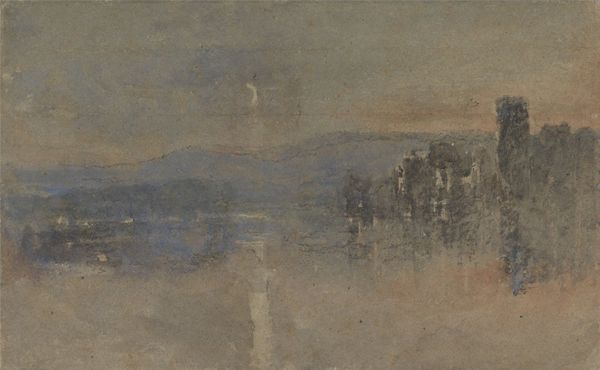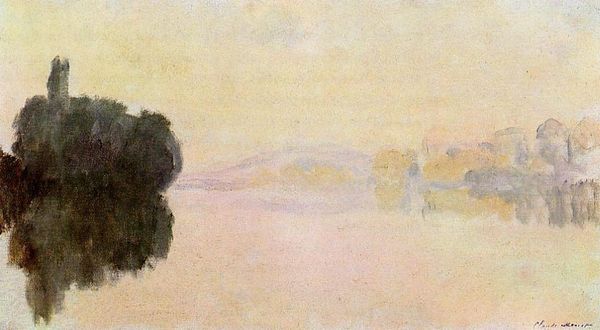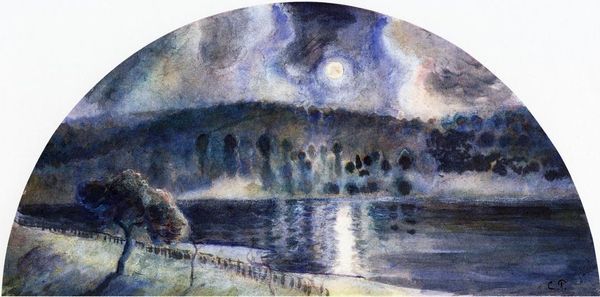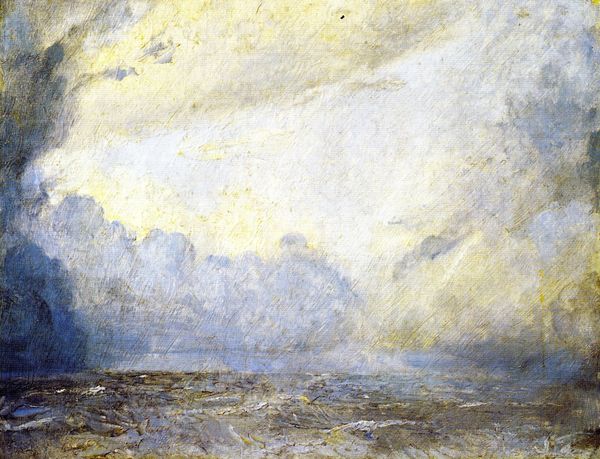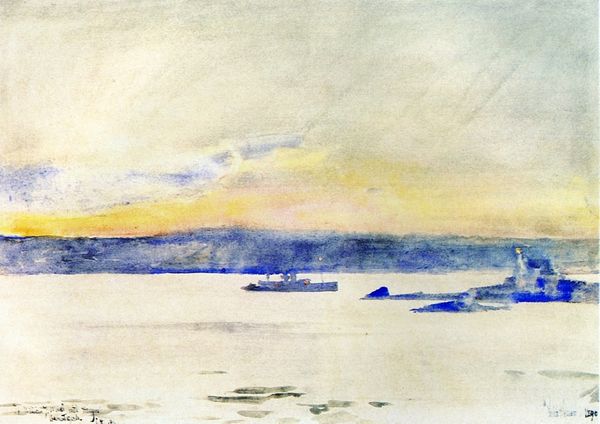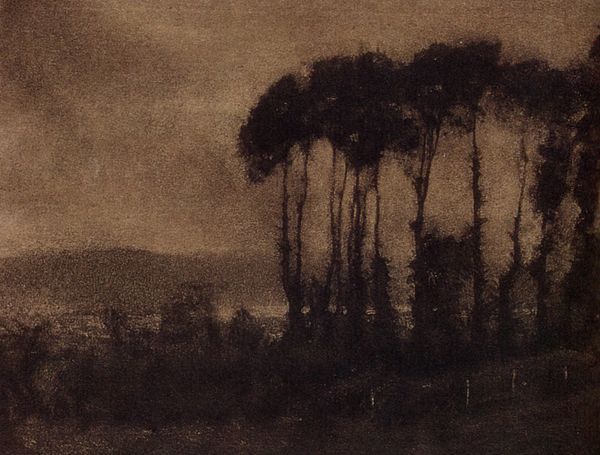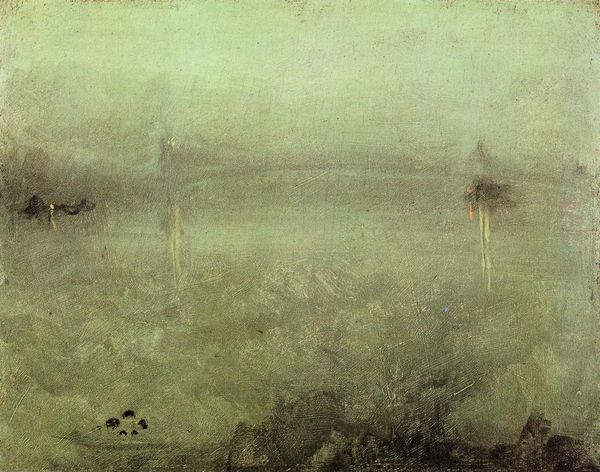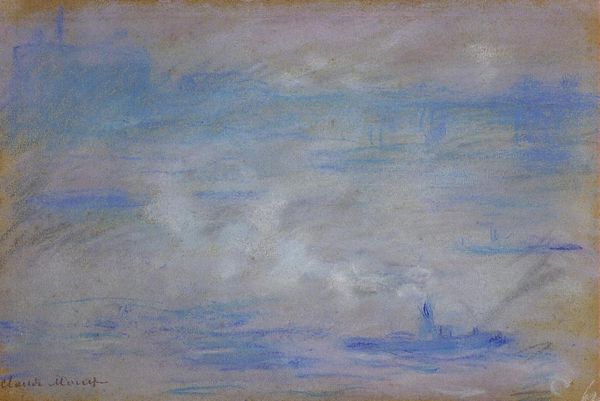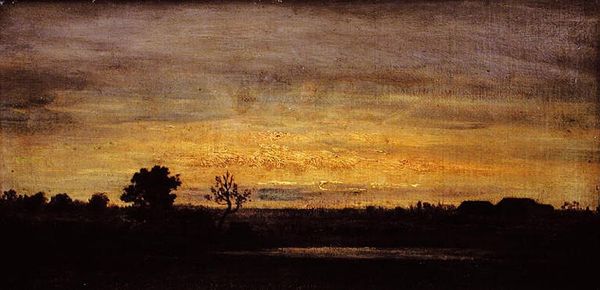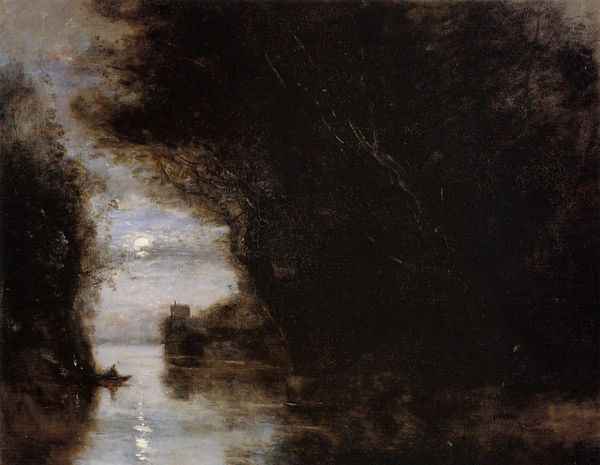
painting, watercolor
#
painting
#
landscape
#
watercolor
#
romanticism
#
watercolor
Copyright: Public domain
Editor: Here we have David Cox's "Moonlight Landscape" from 1849, executed in watercolor. The dreamy blue hues create an almost unsettling atmosphere. How do you interpret this work? Curator: Cox’s watercolors, like this one, are fascinating because they challenge traditional notions of what "high art" should be. Let’s think about the materiality: he's using watercolor, a medium often associated with sketching and amateur work. What does its use here, do you think, suggest about Cox’s attitude toward the established hierarchy of art materials? Editor: That's interesting. It seems to democratize artmaking, suggesting anyone can create something beautiful, and that beauty can come from humble means. The texture created by the watercolor is really important to the composition too, it feels almost like rough paper. Curator: Exactly! And look closer. Cox wasn’t afraid to experiment with technique, was he? Notice the rapid, almost haphazard brushstrokes, a process driven technique more than descriptive approach. How might the burgeoning Industrial Revolution in 19th-century England have influenced this shift toward process and materiality? Was Cox part of a larger movement? Editor: Perhaps this reflects the shift from hand-crafted to machine-made. This approach may try to embrace a human, albeit imperfect touch? I’m still figuring that aspect out... Curator: Precisely. So, by embracing watercolor and a visibly "hands-on" approach to image-making, Cox is aligning himself with the burgeoning Arts and Crafts movement's appreciation of material and labor, while critiquing the mechanization and mass production gaining traction during that period. Something to keep in mind, right? Editor: It gives me a totally new perspective on what landscape art can be about, not just pretty pictures but comments on broader trends in manufacturing and industry. Curator: Indeed, seeing art as enmeshed in social and material conditions opens exciting avenues for investigation.
Comments
No comments
Be the first to comment and join the conversation on the ultimate creative platform.
